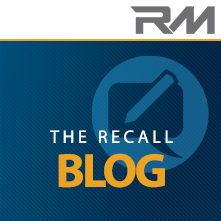Why is Customer Retention Taking Center Stage?
Why is Customer Retention Taking Center Stage?
A Blog Post by Sean Reyes, Chief Marketing Officer for Recall Masters
Walk the aisles of this year’s NADA show and take in the hottest topic shaping the automotive industry – retention. It is a recycled theme, having formerly taking the stage as “customer service”, “the customer experience” and about a dozen other phrases that encapsulate the importance of how consumers interface with your dealership. But retention is a unique business matter in that it reveals its despised counterpart – defection. The demon is at our doors and, for the first time in the industry’s history, franchised dealers no longer the alpha predator when it comes to vehicle servicing.
Service departments at franchised dealerships recently crossed a threshold that not only dropped jaws in the fixed ops community, but throughout the automotive repair industry. For almost 100 years, dealerships were the preferred service center for consumers when it came to vehicle service. When Cox Automotive released the 2023 Service Industry Study last December, the win streak came to an end. For the first time in study history, General Repair Shops were the preferred service facility (33%) to Dealership Service Departments (31%). The proximity, lower prices and convenient scheduling offered at independent repair shops is coupled with a drop in the consumer’s trust of dealerships.
You don’t need consumer surveys or detailed reports to recognize that the independents are feasting on customer defection. Just step outside of any dealership and scan the multitude of retail stores offering tires, wheel alignments, brake jobs, mufflers and general repair work. It’s all customer pay (CP) revenue! There’s not a franchise dealer that isn’t trying to increase CP work, but most aren’t interested in the low-margin tickets, even if that’s all the vehicle needs. Combatting technician shortages, hefty operations overhead and decreased capacity, we’ve all but invited consumers to shop the independents. And, now, with the realization that we’ve also lost out on higher margin repairs that come as vehicles get older as well as the future new car sales that spin out of repeat servicing, dealerships are fixated on retention.
The highly competitive business environment provides consumers with an abundance of choices at their fingertips. While acquiring new customers is essential for business growth, retaining existing customers is equally, if not more, critical for sustained success. Dealerships that prioritize customer retention recognize the long-term value of cultivating strong relationships with their clientele. Here’s why:
- Cost-Effectiveness:
Acquiring new customers can be an expensive endeavor involving marketing, advertising and promotional activities. While new customer acquisition costs in automotive range from $633 (NADA) to $893 (First Page Sage), it’s the lifetime value of these relationships that allow companies to recoup their investment and then some. The acquisition model is not sustainable if customers do not purchase additional goods and services again. It’s in these repeat-purchasing patterns when retaining existing customers delivers a cost-effective ROI. Studies consistently show that it can cost five times more to attract a new customer than to retain an existing one. By focusing on customer retention strategies, companies can optimize their marketing budgets and allocate resources more efficiently.
- Loyalty and Trust:
Customer retention fosters loyalty and trust, two invaluable assets for any business. When customers have positive experiences and feel a connection with the OEM and dealership brand, they are more likely to remain loyal. Loyal customers not only continue to make purchases but also become advocates for the brand, spreading positive word-of-mouth and contributing to organic growth. Building trust with customers is a long-term investment that pays off in sustained loyalty and positive brand perception.
- Stability in Revenue Streams:
A strong base of loyal customers provides stability to a company’s revenue streams, especially in automotive where the first transaction might be the purchase of the new vehicle, but repeat servicing might yield another decade of revenue. Repeat business from existing customers creates a predictable income, allowing dealers to weather economic uncertainties and market fluctuations more effectively. The industry experienced this during the pandemic, when new vehicle sales fell sharply, but vehicle servicing and repair carried the revenue necessary to keep dealers sustainable. This stability is especially crucial during challenging times, as loyal customers are less likely to be swayed by competitors during periods of economic downturn. Hence, why retention takes a more prominent role in 2024 when economic indicators suggest slowed vehicle sales.
- Understanding Customer Needs:
By focusing on customer retention, dealers gain a deeper understanding of their customers’ needs and preferences. Regular interaction and feedback from existing customers provide valuable insights that can be used to improve products, services and the overall customer experience. This feedback loop is instrumental in staying attuned to market trends and evolving consumer expectations. These detailed customer profiles can also define how OEM brands differentiate themselves from other brands or how dealership brands differentiate themselves from neighboring competitors, especially aftermarket repair facilities.
- Long-Term Profitability:
The lifetime value of a customer far exceeds the value of a single transaction, never more true in the automotive industry. As profits from new vehicle sales continue to tighten, OEMs and dealers are desperate to sell more vehicles over the lifetime value of that relationship. Loyalty has dropped considerably, particularly with younger consumer segments. Sold-not-serviced (SNS) customers will eat into dealer profits as will vehicle owners who defect to the independents once warranties expire. Customer retention strategies contribute to long-term profitability by maximizing the revenue generated from each customer over time. By maintaining a satisfied and engaged customer base, companies ensure a steady flow of revenue and reduce the reliance on continuous customer acquisition efforts.
- Competitive Advantage:
In markets saturated with similar products and services, customer retention becomes a significant differentiator. Dealerships have struggled with differentiation since the franchise model took shape. Once pricing margins eroded profitability, dealers turned to F&I products, parts sales and the Service Department to make up the ground. With the results from the recent Cox Study revealed, the dip on service transactions will not only impact future vehicle sales, but will also impact other important revenue sources.
- Timing is Everything
There’s a reason why the showroom and sales are at the front of the dealership. Sure, most of that is just the historical positioning of retail automotive, but it’s also because sales leads to service. Simply stated, sell more cars and you’ll service more cars. In recent times, we’ve also been able to predictably calculate movement in the other direction – servicing more cars leads to selling more cars. Not only does this drive more stable revenue to the dealership for longer periods of time, but also allows dealerships to demonstrate a heightened level of service than they might otherwise see at an independent repair shop or even at a competing franchise dealership. It’s all part of the “why buy here?” equation that defines most local dealers. But, with brand loyalty at an all time low, it’s harder to convince the consumer that servicing with the dealer is more preferable than servicing with the independent repair shop. Fewer transactions do not simply equate to declining service revenue, but also means that opportunities to sell new vehicles fly right out the door with them. While there are many reasons why consumers decide to go into the market for a new car, at the top is the need for reliable transportation and the replacement of a current vehicle with high mileage and riddle with soaring repair costs. If you aren’t seeing these vehicles in your service lane, you significantly reduce your opportunity to sell them a replacement vehicle.
In the dynamic landscape dealers face, where customer expectations are continually evolving, the importance of customer retention cannot be overstated. Stores that prioritize retaining existing customers not only save on acquisition costs but also benefit from increased loyalty, stability in revenue streams and a competitive edge in the market. By investing in strong customer relationships, businesses position themselves for long-term success and sustainable growth in an ever-changing marketplace.
At the doorstep of 2024, we should be exploring every idea on how to effectively move the retention needle. There’s a consequence to waiting or being complacent in the matter. Let’s face it – you have a hole in your bucket at customers are choosing to defect to the aftermarket for servicing; some dealerships more than others. Still, when challenging your store to focus on retention, moving the needle is going to require more than just a coffee bar, free wi-fi in the waiting area and some new magazines. More to come on ideas on how to break the paradigm of dull customer experience tactics. Common courtesy is so 1990s – consumers want UNcommon courtesy.
About the Author


